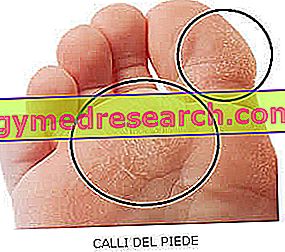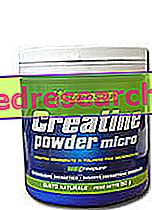Calli: what they are
The calluses are small and annoying lesions that arise mainly on the palms of the hands, on the soles of the feet and between the fingers. Although the cause is often due to repeated local insults, such as excessive rubbing and pressure, calluses can sometimes depend on diseases (eg diabetes) or poison poisoning.

When they grow in certain foot positions, they can cause discomfort, pain or even compromise posture and walking. In this discussion we will try to understand if there is an effective cure to remove calluses and how they can be prevented.
Depending on the triggering cause, it is possible to distinguish between calluses and corns from illness or other disorders. The treatment and prevention of the first mentioned is certainly simpler than the latter, for which, instead, the intervention of the doctor is necessary.
Prevention
As with most known disorders and diseases, the best cure for corns is undoubtedly prevention.

- Always use cotton socks, preferring those without stiff seams;
- Choose comfortable shoes that fit your feet;
- Protect your hands with gloves before carrying out special work such as gardening;
- Frequently practice warm footbaths;
- Keep your feet dry and clean;
- Change shoes and socks often;
- If necessary, use soft orthotics or plasters before putting on shoes: their presence attenuates any shocks and pressure against the shoes;
- Don't walk barefoot;
- Massage the skin with moisturizing and nourishing creams to keep the skin supple.
If, on the other hand, calluses are the symptom and / or are caused by diseases, disorders or poisonings (such as arsenic), prevention is more complicated.
As for poisoning calluses, of course, it is necessary to avoid contact with toxic agents that can cause their appearance.
With regard to calluses from diseases or disorders, however, their formation is not always avoidable, even when we are aware of being affected by diseases or disorders that can cause their formation. This is the case, for example, of calluses formed in diabetic patients, which will be discussed shortly in this article.
Treatment
Generally, a person in full health who notices the presence of a callus needs podiatry treatment only when the lesion becomes painful or creates serious problems.
In most cases, in fact, to eliminate the callus spontaneously it is sufficient to eliminate the source of friction or pressure.
In a healthy person who complains of annoying and recurrent calluses under the feet, the most indicated treatment consists in using keratolytic products containing particular substances, such as:
- Alpha-hydroxy acids, such as glycolic acid ;
- Exfoliating agents prepared with beta-hydroxy acids, such as salicylic acid (with keratolytic and smoothing properties);
- Urea (for further information, read urea cream),
As an alternative to the treatment with chemical agents - or, possibly, as a complementary treatment - the calluses can be removed with a specific razor for calluses . However, after using tools such as the razor for calluses, the use of antibacterial creams or ointments is recommended to minimize the risk of infections.
As an alternative to razor for corns, these skin thickenings can be polished with pumice stone . Eventually, it is also possible to make a foot bath before proceeding with mechanical polishing with pumice stone, so as to soften the area of thickened epidermis to be treated.

The speech is different, however, with regard to calluses caused by diseases or other disorders, for diabetic patients and for all subjects who have poor blood circulation to the feet. In such circumstances, the presence of one or more streets could have serious consequences for the victim; therefore, the assistance of a doctor is indispensable precisely to prevent possible complications.
In fact, in addition to the treatment of the calluses themselves, the doctor will suddenly have to intervene on the cause that favored their appearance (diabetes or other pathologies, arsenic poisonings, etc.)
Corns and Diabetes
If corns are not a serious disorder for most individuals, things are not as simple for diabetic patients.
In fact, diabetic patients must pay close attention to skin damage, particularly when the lesions arise on the feet. As we know, the metabolic alterations and the symptoms of diabetes also have negative repercussions at the level of the blood vessels: a possible thickening of the skin of the foot, such as a callus, makes the transport of nutrients to the skin even more difficult.
The skin of a diabetic's feet does not receive the necessary blood supply; therefore the skin, which becomes very thin and fragile, struggles to repair damage and injuries such as calluses.
The feet of a diabetic patient undoubtedly require more attention than those of a healthy subject: the loss of sensitivity and slower healing - conditions typically related to diabetes - can, in fact, favor the appearance of lacerations, wounds and calluses that, continuing for a long time, they could get worse and cause serious damage such as bleeding ulcers.
Why are diabetic patients often affected by calluses?
The explanation is simple: among the various complications of diabetes, foot deformations cannot be missing. As a result, the fingers adjust their support to the ground, they tend to bend, forcing the foot to press and hit the shoe at certain points. The very fragile skin is forced to bear abnormal workloads; therefore, small pressure calluses develop, which can degenerate into extremely dangerous bleeding diabetic ulcers. The most serious problem is that if the diabetic does not realize the callus, this can degenerate into an ulcer without the patient accusing any symptoms: diabetes, in fact, causing a reduction in the sensory capacity prevents the subject from noticing the lesion.
deepening
Unfortunately for diabetic patients, the transition from a simple callus to limb amputation is shorter than one might think.

- Callus formation at the feet of a diabetic;
- Increased pressure and friction exercised in one point of the foot;
- Callus internal bleeding;
- Diabetic foot ulcer formation;
- Poor tissue oxygenation (due to macroangiopathy);
- Scar healing difficulties;
- Increased risk of bacterial infections;
- Infection and gangrene (or gangrene, if you prefer);
- Amputation of the limb.
How to prevent corns in a diabetic patient?
Even small foot injuries such as calluses can be the immediate consequence of a lack of attention to personal hygiene. As reiterated, the diabetic patient must take extreme care at his feet: at least one wash per day is therefore a must, the daily change of socks and the constant use of moisturizing foot creams.

The feet of the elderly should always be adequately controlled by a second person, be it a family member or a doctor.
Corn prevention in a patient with hyperglycemia is the best weapon against diabetic foot ulcers.



